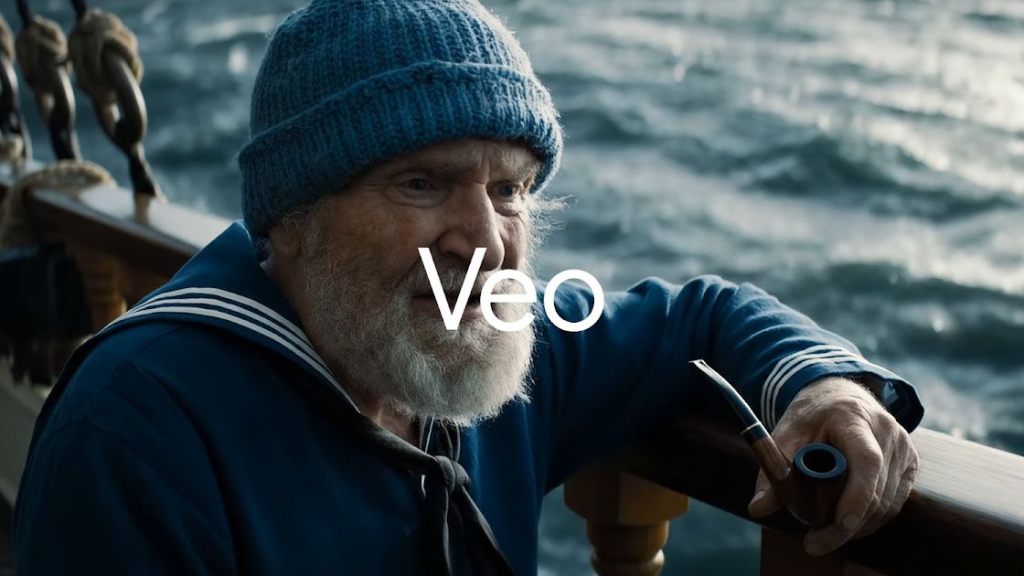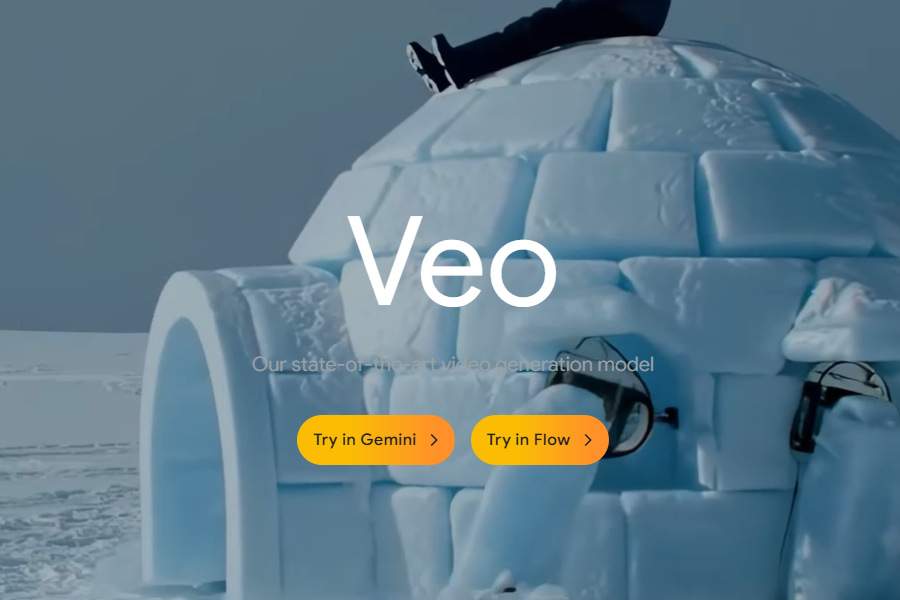Got an epic video concept but struggling to execute it? Imagine bypassing the grunt work and producing studio-grade content in minutes—with just a few words.
That’s where Veo 3, Google’s latest AI video generator, comes in. Unlike basic AI tools, Veo 3 doesn’t just stitch clips together—it crafts cinematic scenes with dynamic lighting, realistic motion, and even synchronized audio.
But here’s the catch: your Veo 3 prompts make or break the results. Remember to describe scenes like a film director, control mood with tone words, and always script sound.
Keep reading, you’ll know exactly how to turn rough ideas into polished videos.
What Is Veo 3?
If you missed Google I/O 2025, here’s the scoop: Veo 3 is Google’s most advanced AI video generator yet.
Unlike earlier versions, it doesn’t just animate static images—it creates full HD scenes with realistic movement, lighting, and sound.
In a nutshell, Veo 3 isn’t just a helpful tool; it’s like having a one-person production crew that works at lightning speed. And the key to unleashing its full, awe-inspiring potential? Yep, you guessed it: mastering your Veo 3 prompts.
Related Reading: Google Veo 3 Image to Video Feature
Key Elements in Veo 3 Prompts

Think of a Veo 3 prompt like a recipe for a gourmet meal. If you miss a crucial ingredient, your culinary creation (or video) might fall flat. But get all the elements just right, and you’ll whip up something truly shareable.
Here’s a breakdown of what you absolutely need to include:
- Subject: This is your video’s main character, the undeniable star of the show. Is it a playful golden retriever? A sleek vintage motorcycle cruising down a highway? A vibrant, bustling farmers’ market? Be incredibly specific. “A dog” is vague and leaves too much to chance, but “a shaggy golden retriever puppy” paints a vivid, immediate picture.
- Action: What is your subject actually doing? Is the puppy playfully chasing a butterfly? Is the motorcycle revving its engine and speeding down a winding highway? Is the market vendor meticulously arranging a display of ripe, juicy strawberries? Movement brings your video to life and makes it feel dynamic.
- Context: Where does your subject live within the scene? Is it frolicking in a sun-dappled forest? Zooming through a neon-lit Tokyo alley at night? Or perhaps chilling in a 90s-style bedroom adorned with a lava lamp? The context meticulously sets the stage, so never skip this vital detail.
- Style: How do you want your video to feel? Do you envision something with the quirky charm and symmetrical visuals of a Wes Anderson film (think soft pastels and precise framing)? Or maybe a bright, playful, and heartwarming Pixar-esque short? The style defines the entire vibe—so don’t be shy in articulating it!
- Camera Motion (optional but super cool): How does the camera move through your scene? Is it a slow, deliberate pan across a breathtaking sunset? Or perhaps it floats gracefully like a drone over a majestic mountain range? Incorporating camera motion adds that irresistible cinematic flair.
- Composition (optional): How is your shot framed? Is it an intimate close-up of a single tear rolling down a character’s cheek? Or an extreme close-up of a clock’s hand ticking down those final, suspenseful seconds? Framing acts as a visual guide, directing the viewer’s eye precisely where you want it to go.
- Ambiance (optional): This describes the feeling conveyed through light and color. Do you want “warm golden hour light filtering through tree branches with subtle lens flares”? Or “soft, diffused pastels reminiscent of a watercolor painting”? Ambiance sets the emotional tone of your video—use it to evoke specific feelings in your audience.
5 Tips for Writing Veo 3 Prompts Like a Pro
You don’t need film school—just these tricks to make your prompts pop.
1. Paint with Words
Veo 3 thrives on specifics. Compare:
- Weak: “A beach.”
- Strong: “A deserted beach at sunset, waves foaming over pink sand, with one seagull circling a lone sandcastle.”
See the difference? The second prompt gives the AI a blueprint instead of a blank canvas.
2. Borrow from Cinematic Language
Use terms like:
- “Close-up of…” (for emotional moments)
- “Wide shot of…” (to establish a scene)
- “Over-the-shoulder view of…” (for conversations)
Example: “Close-up of wrinkled hands knitting a tiny blue sweater, needles clicking softly.”
3. Steer the Mood
Add tone words to shape the feel:
- “Nostalgic” → Soft focus, warm tones
- “Suspenseful” → Dark shadows, tense music
- “Whimsical” → Bright colors, playful angles
4. Don’t Forget Sound
Veo 3 generates audio, so guide it:
- Music: “Upbeat ukulele tune, like a vacation vlog.”
- Ambience: “Crackling campfire and owl hoots.”
- Dialogue: “A grandpa murmuring, ‘That’s how I met your grandma.’”
5. Stuck? Ask ChatGpt for Help
Yes, it’s meta—but try: “Suggest 5 Veo 3 prompts for a dystopian robot café scene.” It’s like having a creative partner.
Quick Fixes for Common Veo 3 Issues
Even the best prompts sometimes misfire. Here’s how to troubleshoot:
Problem 1: “The lighting looks flat.”
Fix: Replace “bright” with “sunlight dappling through oak trees at 4 PM.”
Problem 2: “The AI added random objects.”
Fix: Instead of “no spaceships,” say “a 1950s diner, only normal cars outside.”
Problem 3: “The audio doesn’t match.”
Fix: Specify timing. “At 0:03, a gasp as the character drops the vase.”
Conclusion on Veo 3 Prompts
Veo 3 isn’t about perfection—it’s about possibility. Your first prompt might not be flawless, but with each tweak, you’ll see how small changes transform the result.
This tool isn’t replacing filmmakers; it’s empowering anyone with an idea. So go ahead—describe that scene in your head, refine it, and watch Veo 3 bring it to life. The only limit? How vividly you can imagine it.
Now, what story will you tell first?



